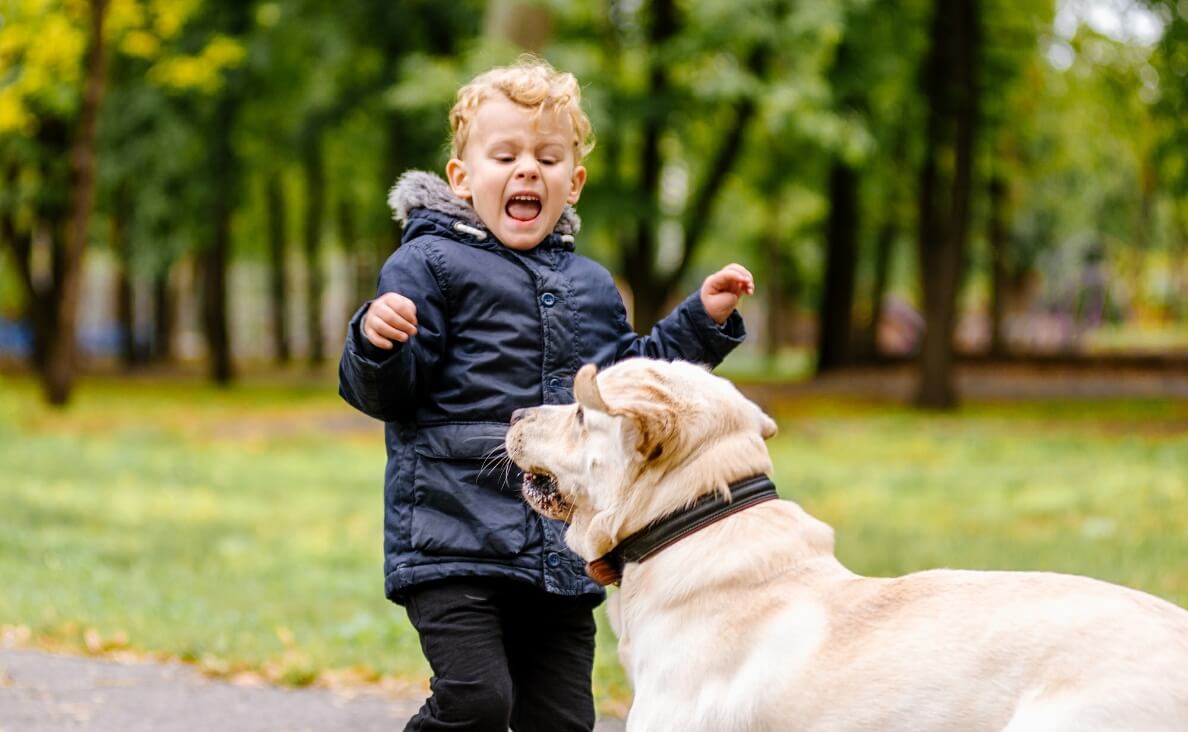
It’s every parent’s nightmare: your child is playing in the yard or walking to school when an unfamiliar dog, off-leash and unsupervised, suddenly appears. Your heart races, your instincts kick in—but does your child know what to do? Do you?
Knowing how to protect your child from an unleashed dog is essential for every parent, caregiver, or educator. Dog encounters are more common than you might think, and while many dogs are friendly, not all are trained or safe to approach. In this post, we’ll walk you through how to protect your child from an unleashed dog—before, during, and after an encounter—so you can stay calm and act confidently.
Related: How to Teach Kids to Pet an Unknown Dog
Understanding the Risks
Before we dive into safety strategies, let’s look at why this matters. Children are especially vulnerable to dog-related incidents for a few reasons:
• They are smaller in size, often perceived as less threatening but more tempting to chase.
• Their movements can be erratic—running, yelling, or flailing—which may provoke a dog’s prey instinct.
• They often don’t know how to read dog body language or respond appropriately.
According to the World Health Organization, more than 4.5 million dog bites occur each year in the U.S., and over half of the victims are children. Many of these incidents happen in familiar environments—but a surprising number also happen in parks, sidewalks, and front yards where unleashed dogs roam free.
To protect your child from an unleashed dog, you need a blend of knowledge, preparation, and calm leadership.
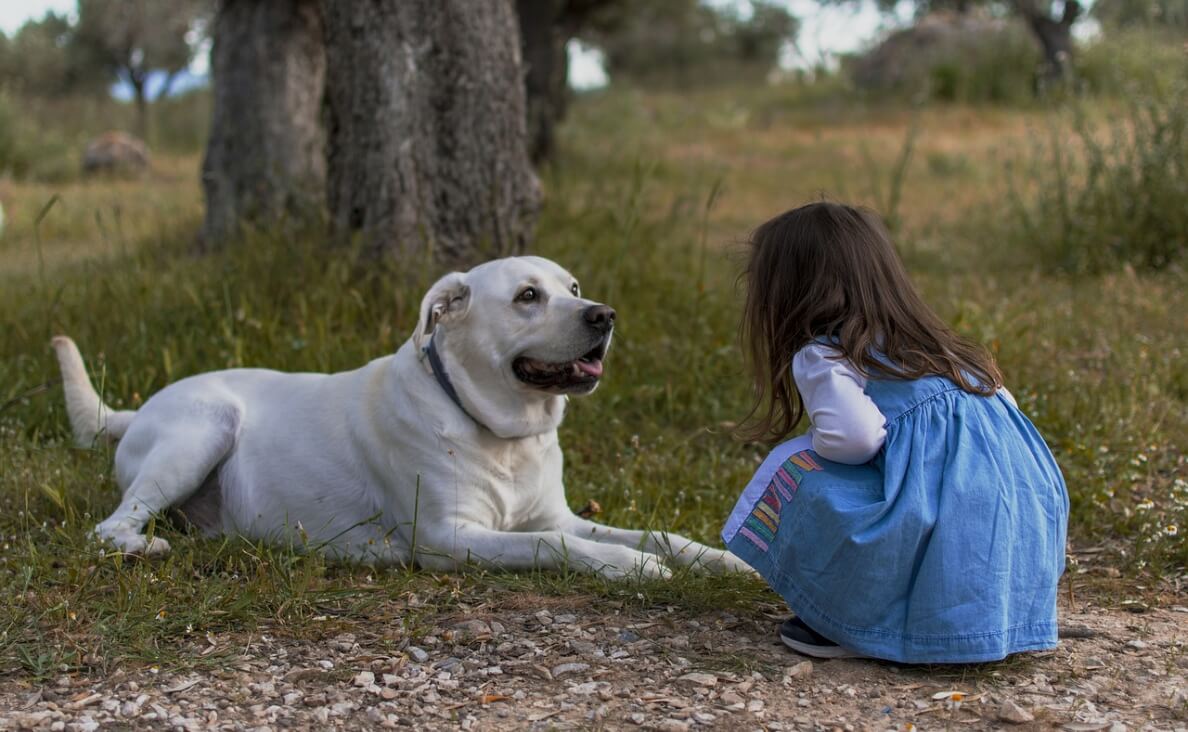
Teach Your Child Basic Dog Safety Rules
The best way to protect your child from an unleashed dog is through education and practice. Young children may naturally want to run or scream when they see a dog running toward them—but that’s often the worst thing they can do.
Here are key rules to teach your child:
1. Be a Tree
This technique is simple and effective:
• Stand still
• Arms at your sides or crossed over your chest
• Eyes looking down
• Stay quiet
Dogs are less likely to be excited or aggressive when the child is calm and non-threatening.
2. Never Run Away
Running triggers a dog’s chase instinct. Instead, children should freeze or slowly back away.
3. Avoid Eye Contact
Direct eye contact can be perceived as a challenge. Teach your child to look down and to the side.
4. Keep Your Voice Low and Calm
Screaming or yelling can escalate the situation. Instead, speaking in a soft, slow tone can reduce the dog’s excitement or confusion.
5. Always Tell an Adult
If your child sees an unleashed dog in the neighborhood or park, they should always tell a trusted adult—even if nothing happened. It’s an opportunity to act before a serious situation arises.
By practicing these steps at home, you help protect your child from an unleashed dog by building calm, confident habits.
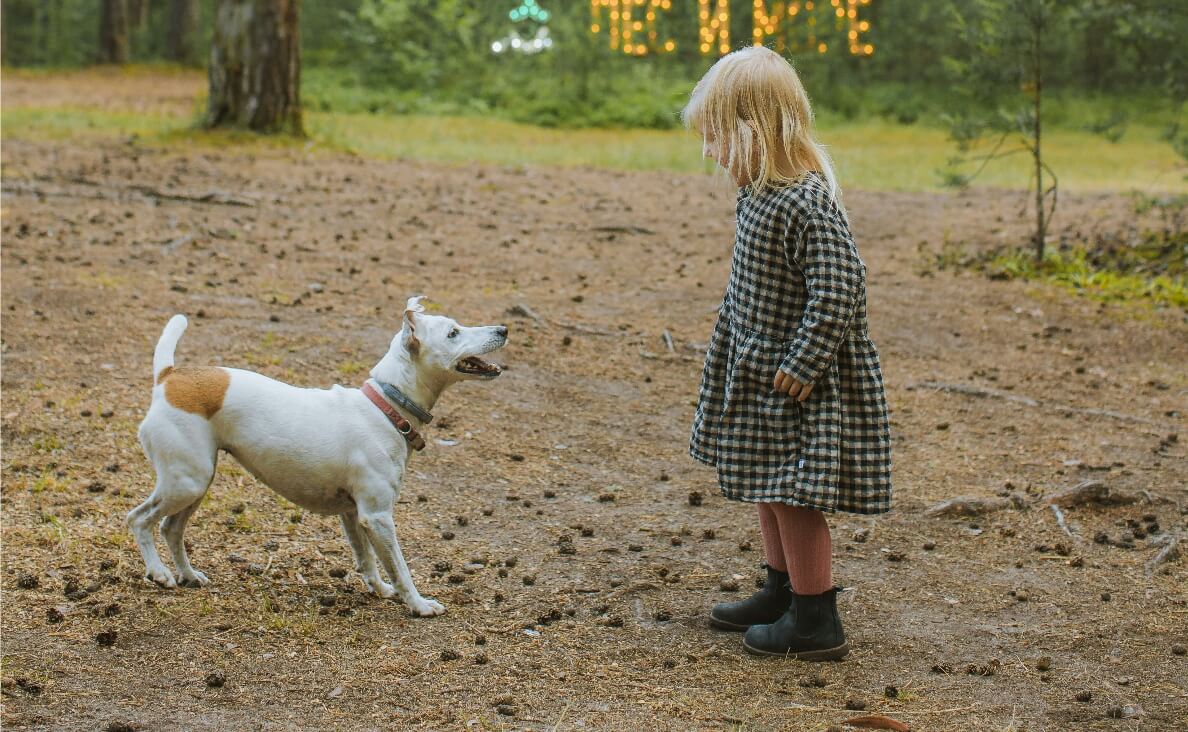
What to Do If an Unleashed Dog Approaches
If a dog does approach your child, here’s what to do in the moment:
1. Stay Calm and Assess the Situation
Is the dog wagging its tail in a relaxed way, or is it barking, growling, or lunging? Your reaction will depend on its behavior.
2. Place Yourself Between the Dog and Your Child
Stand tall, extend your arms slightly, and use your body as a protective barrier. Your goal is to project calm authority without escalating the situation.
3. Use a Firm Voice
Say “No,” “Go home,” or “Stop” in a strong, steady tone. Most dogs understand basic commands—even strays.
4. Don’t Reach for the Dog
Even if it looks friendly, don’t attempt to pet, grab, or push the dog away. This could be misinterpreted and provoke a bite.
5. Back Away Slowly
With your child behind you, begin to retreat slowly toward a safe location. Avoid turning your back to the dog.
6. Use What You Have
A backpack, umbrella, or even a jacket can serve as a shield if the dog lunges or acts aggressively. Stay grounded and ready.
All of these techniques are designed to help you protect your child from an unleashed dog using calm, controlled actions—not panic.
Preventative Steps You Can Take as a Parent
Preparedness is a powerful tool. Here are several proactive ways to protect your child from an unleashed dog before an encounter even happens:
1. Stay in Familiar, Controlled Areas
Choose parks and paths known for responsible dog owners or where leashes are required. Avoid shortcuts or open fields with no visibility.
2. Walk With Awareness
Encourage children to always look around and scan for dogs—especially in neighborhoods where loose dogs are common.
3. Carry Dog Deterrents
Consider carrying a whistle, citronella spray, or a collapsible umbrella when walking with your child. These tools can create space between you and an aggressive dog.
4. Report Roaming Dogs
If you see a loose or unleashed dog regularly in your area, contact your local animal control. Don’t wait until something happens to take action.
5. Talk to Neighbors
A friendly chat can go a long way. If you know who the dog belongs to, ask them to be more cautious and remind them of local leash laws.
Protecting your child from an unleashed dog isn’t just about reacting—it’s about prevention, too.
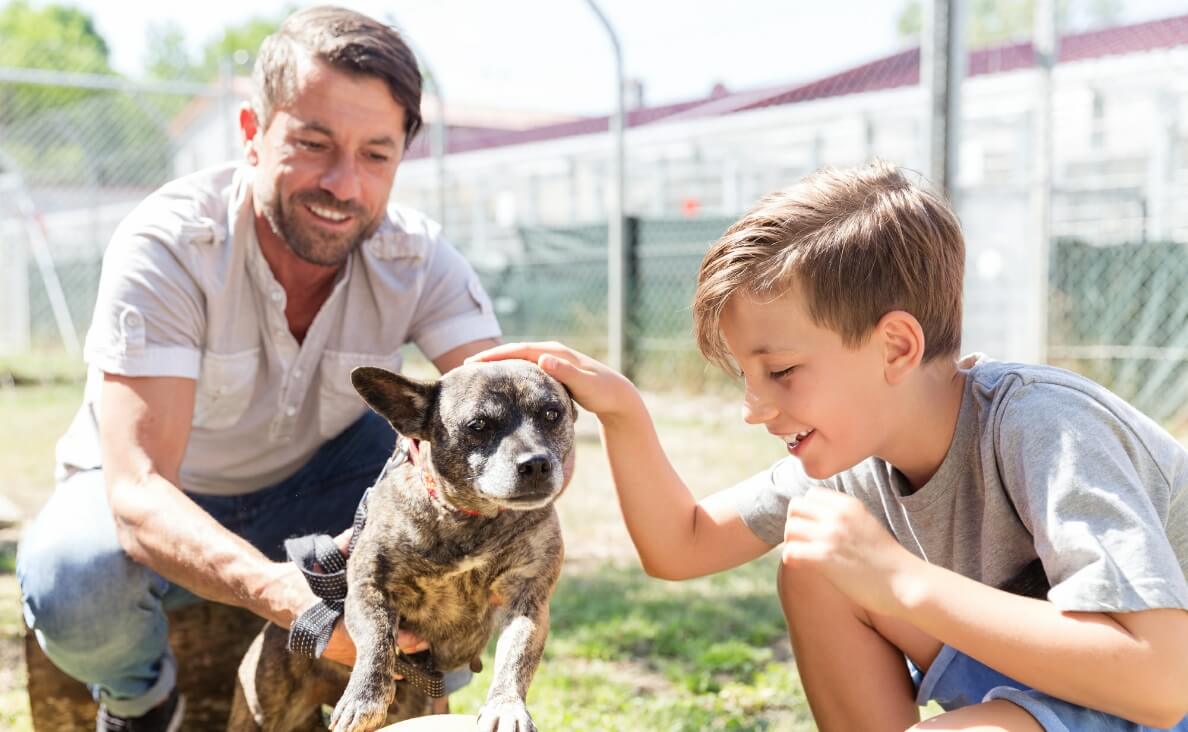
What to Do After an Encounter
Even if the dog doesn’t bite, an unexpected encounter can be scary for both you and your child. Here’s what to do after the event:
1. Check for Injuries
Even a jump or brush can cause scratches, bruises, or anxiety. If there’s a bite or broken skin, seek medical attention immediately.
2. Watch for Delayed Trauma
Nightmares, clinginess, or sudden fear of going outside may indicate trauma. Be patient and supportive.
3. Report the Incident
Call animal control and give a description of the dog, its behavior, and the location. If you know the owner, provide their information.
4. Reassure Your Child
Let them know they did a great job staying safe. Praise their calmness or bravery, and talk through what happened in age-appropriate terms.
Learning how to protect your child from an unleashed dog also means knowing how to emotionally support them afterward.
When to Seek Professional Help
Not every dog encounter results in a bite, but psychological scars can run deep—especially for young children. If your child:
• Refuses to go outside
• Cries at the sight of dogs
• Has trouble sleeping
• Begins regressing (bedwetting, tantrums)
…it may be time to consult a child psychologist or trauma counselor. You may also consider working with a professional dog trainer or behaviorist to help reintroduce dogs in a safe way over time.
When necessary, mental health support becomes an essential way to protect your child from an unleashed dog—both physically and emotionally.

Conclusion: Be Calm, Be Prepared, Be Protective
Encountering an unleashed dog can be frightening—but it doesn’t have to result in injury or trauma. With the right preparation, clear communication, and consistent practice, you can help your child feel empowered and ready.
Remember the key steps:
• Teach safety techniques like “Be a Tree”
• Stay calm and act as a shield if needed
• Use firm verbal commands
• Always assess for trauma afterward
• Take preventative steps to avoid risky areas
Ultimately, learning how to protect your child from an unleashed dog isn’t just about managing risk—it’s about raising confident kids who can navigate the world safely.
What About You?
Have you or your child ever had an encounter with an unleashed dog? How did you handle it—and what advice would you share with other parents?
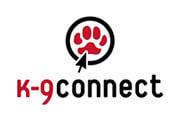
 Can Dogs Really Count? Exploring the Cognitive Abilities of Canine Companions
Can Dogs Really Count? Exploring the Cognitive Abilities of Canine Companions Do Dogs Smile? What’s Really Behind That Adorable Smile?
Do Dogs Smile? What’s Really Behind That Adorable Smile? 10 Things Your Dog Hates and Wishes You Would Stop Doing
10 Things Your Dog Hates and Wishes You Would Stop Doing How Many Words Can Dogs Learn?
How Many Words Can Dogs Learn? Does Your Dog Know You Love Him or Her? Here’s How to Tell
Does Your Dog Know You Love Him or Her? Here’s How to Tell






Leave a Reply